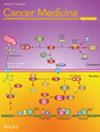Individualized dose prediction is critical for optimizing radiation treatment planning. This study introduces DESIRE, an enhanced UNet-based dose prediction model with progrEssive feature fuSion and dIfficult Region lEarning, tailored for nasopharyngeal carcinoma (NPC) patients receiving volumetric modulated arc therapy. We aimed to assess the impact of integrating DESIRE into the treatment planning process to improve plan quality.
This retrospective study included 131 NPC patients diagnosed at Jiangxi Cancer Hospital between 2017 and 2020. Twenty patients were randomly allocated to a testing cohort, while the remaining 111 comprised a training cohort. Target delineation included three planning target volumes (PTVs): PTV70, PTV60, and PTV55, along with several organs at risk (OARs). The DESIRE model predicted dose distributions, and discrepancies between DESIRE's predictions and the ground truth (GT) were quantified using dosimetric metrics and gamma pass rates. Two junior physicians used DESIRE's predictions for treatment planning, and their plans were compared to the GT.
Most of DESIRE's predicted dosimetric metrics closely aligned with GT (mean difference < 1 Gy), with no significant differences (p > 0.05) in Dmean and D1 values across OARs. While significant differences were observed in PTV metrics, the mean differences in D98, D95, D50, and Dmean between DESIRE and GT did not exceed 1 Gy. Assisted by DESIRE, the junior physicians' plans were comparable to the GT in nearly all OARs, with no significant differences in dosimetric metrics. The conformity index (CI) and homogeneity index (HI) for PTV70 surpassed the GT (0.847 ± 0.036 vs. 0.827 ± 0.037 for CI, and 0.057 ± 0.009 vs. 0.052 ± 0.008 for HI). The average three-dimensional gamma passing rates were 0.85 for PTV70 and 0.87 for the 35-Gy isodose line.
The DESIRE model shows promise for patient-specific dose prediction, enhancing junior physicians' treatment planning capabilities and improving plan quality.



